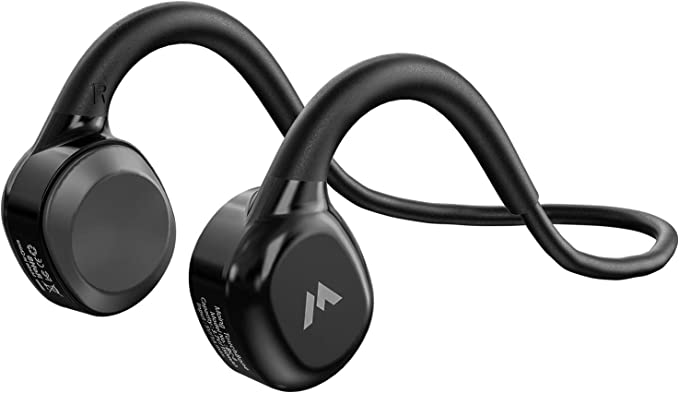The Thermostat Placement Bible: A Data-Driven Guide on Where to Install Your Sensor
Update on Oct. 19, 2025, 12:53 p.m.
You’ve invested in a state-of-the-art heating and cooling system. You have a smart thermostat that promises precision and savings. Yet, your reality is a constant battle: the living room is an icebox while the bedroom is a sauna. Your system kicks on and off erratically. You find yourself constantly nudging the temperature up or down, wondering why the number on the screen feels so disconnected from reality.
Before you call a costly technician or blame the device, consider a simpler culprit: your thermostat is in the wrong place.
A thermostat is the brain of your HVAC system, but its brainpower is only as good as the information it receives. If its sensor is in a bad location, it’s making decisions based on faulty data. This leads to discomfort, wasted energy—potentially increasing your bills by 10-15%—and unnecessary wear and tear on your equipment. This guide is your bible to fixing that.

The Golden Rule: Think Like Air
Forget everything else for a moment and remember this one principle: Your thermostat’s job is to sample the most representative, well-circulated air in the living space it controls.
It needs to feel what you feel, on average. To find that ‘average’ spot, it’s often easier to first identify all the places where your thermostat will get a wildly biased reading. Let’s play detective and uncover the seven deadly sins of thermostat placement.
The Seven Deadly Sins: Where NOT to Place Your Thermostat
Avoid these “microclimates” in your home at all costs. They will fool your thermostat every time.
[Icon: ️] Sin 1: The Sunbath (Direct Sunlight)
Placing a thermostat where it can be hit by direct sunlight is the number one mistake. The sun’s radiant heat will warm up the thermostat’s casing and sensor, making it think the room is much warmer than it actually is. * The Result: In winter, your heat will shut off prematurely, leaving you shivering. In summer, your A/C will run endlessly, trying to cool down a sensor that’s being “cooked” by the sun, turning your home into a freezer. This can cause a false reading of up to 5°C (about 9°F).
[Icon: ] Sin 2: The Wind Tunnel (Drafts)
Don’t install a thermostat near drafty windows, doors, or vents. Constant airflow, whether a cold draft in winter or just the breeze from an open window, will skew the reading. * The Result: A cold draft will make the thermostat think the room is colder than it is, causing your heat to run overtime. A draft from a hallway might prevent it from accurately sensing the temperature in the main room.
[Icon: ] Sin 3: The Kitchen’s Breath (Near Heat Sources)
The kitchen is a minefield of thermal chaos. Placing a thermostat on a wall adjacent to the kitchen, or even in the direct path of air flowing from it, is a recipe for disaster. Heat from ovens, stovetops, and even dishwashers will drift and give it a false warm reading. * The Result: Your A/C will work harder than it needs to every time you cook dinner.
[Icon: ] Sin 4: The Hidden Corner (Poor Air Circulation)
Alcoves, areas behind doors, or corners blocked by large furniture are dead zones for air. The temperature there is stagnant and not representative of the rest of the room. * The Result: The thermostat will be slow to respond to actual changes in the room’s temperature, leading to long periods of being too hot or too cold.
[Icon: ] Sin 5: The Phantom Wall (Exterior Walls)
Never mount a thermostat on an exterior wall. These walls are colder in the winter and warmer in the summer than interior walls due to a phenomenon called “thermal bridging.” The thermostat will be sensing the wall’s temperature as much as the air’s. The same goes for walls that have uninsulated plumbing pipes inside them. * The Result: Constant inaccurate readings that reflect the outdoor conditions more than your indoor comfort.
[Icon: вентилятор] Sin 6: The Ghost in the Machine (Directly Above/Below Vents)
Placing a thermostat in the direct line of fire of a supply vent is like putting a thermometer in someone’s mouth right after they’ve had a hot or cold drink. It gets an extreme, unrepresentative blast of conditioned air. * The Result: The system will shut off almost immediately after turning on, a behavior called “short cycling,” which is incredibly inefficient and hard on your equipment.
[Icon: ] Sin 7: The Lamp’s Shadow (Near Electronics)
Lamps (especially incandescent ones), television sets, and other electronics generate a surprising amount of heat. Placing your thermostat right next to them will lead to consistently high readings. * The Result: Your A/C runs more, and your heat runs less, all because your thermostat is enjoying the warmth from your TV.
The Three Holy Grails: The Best Spots in Your Home
Now that we know where not to go, where is the ideal spot?
Grail 1: The Interior Wall
This is non-negotiable. An interior wall is buffered from the temperature swings of the outdoors, providing a stable and accurate location.
Grail 2: The Center of Life (High-Traffic Areas)
Place the thermostat in a room you use frequently, like the living room or a central hallway. This ensures your HVAC system is working to keep the most important areas comfortable. The airflow in these areas is also generally better.
Grail 3: The Right Height
Mount the thermostat about 1.5 meters (or 5 feet) off the floor. Heat rises, so placing it too low will make it read cold, and too high will make it read warm. Shoulder height is a good rule of thumb, as it accurately reflects the temperature of the air in the “occupied zone” of the room.
Pro-Tips for Tricky Situations
Following these three guidelines will solve the problem for 90% of homes. But what if you live in a space that’s a bit more… complicated?
- The Open-Concept Dilemma: In a great room that combines a kitchen, dining, and living area, find a central spot on an interior wall that is furthest from the direct heat of the kitchen and any large, sun-facing windows. The goal is to find the “center of gravity” of your living space.
- The Multi-Story Challenge: A single thermostat can’t effectively manage a two-story home. Heat rises, making the upstairs naturally warmer. The best solution here is a zoned system with multiple thermostats. If that’s not an option, placing the single thermostat in a central location on the main floor is the best compromise.
- The Mini-Split Solution (The Power of Wireless): Systems like Mitsubishi mini-splits often have their native sensor in the wall unit itself—high on a wall, a terrible spot! This is where a wireless controller like the MHK2 becomes a hero. It decouples the sensor from the unit, allowing you to place this “brain” in the perfect spot in the middle of the room, finally giving the system accurate information to work with.
The “Thermostat Walk” Test
If you have a wireless thermostat, try this experiment. Hold it in your hand and stand in different parts of your room for 10-15 minutes at a time. Stand near the window, then in a corner, then in the center. You will be amazed at the temperature differences you see. This simple test will give you an intuitive feel for your home’s unique thermal landscape and prove the importance of proper placement.
By treating your thermostat’s location with the care it deserves, you can solve many of your home’s comfort and efficiency problems with one simple, free fix.



















